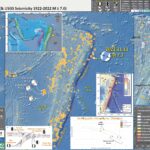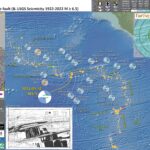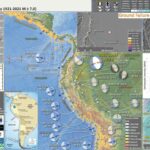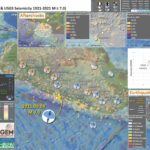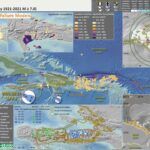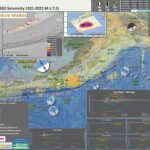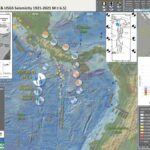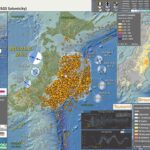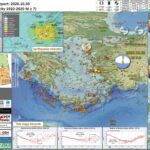Early this morning I received some notifications of earthquakes along the Tonga trench (southwestern central Pacific Ocean). It was about 2am my local time. I work on the tsunami program for the California state tsunami program (CTP) and we respond…
Earthquake Report: M 6.9 Mid Atlantic Ridge
There have not been that many large earthquakes this year. This is good for one main reason, there is a lower potential for human suffering. Therefore, there are fewer Earthquake Reports for this year. This morning (my time) there was…
Earthquake Report: M 7.5 in Peru
In the middle of the night (my time) I got a notification from the EMSC earthquake notification service. I encourage everyone to download and use this app. There was an intermediate depth magnitude M 7.5 earthquake in Peru. The tectonics…
Earthquake Report Lite: M 7.0 near Acapulco, Mexico
I don’t always have the time to write a proper Earthquake Report. However, I prepare interpretive posters for these events. Because of this, I present Earthquake Report Lite. (but it is more than just water, like the adult beverage that…
Earthquake Report: M 7.2 in Haiti
I don’t always have the time to write a proper Earthquake Report. However, I prepare interpretive posters for these events. Because of this, I present Earthquake Report Lite. (but it is more than just water, like the adult beverage that…
Earthquake Report: M 8.2 near Perryville, Alaska
A few days ago, I was passed out on my couch (sleep apnea) and for some reason I awoke and noticed that I had gotten a CSEM notification of a large earthquake offshore of Alaska. Well, after looking into that,…
Earthquake Report M 6.7 in Panama
I don’t always have the time to write a proper Earthquake Report. However, I prepare interpretive posters for these events. Because of this, I present Earthquake Report Lite. (but it is more than just water, like the adult beverage that…
Earthquake Report: Tōhoku-oki Earthquake Ten Years Later
This year we look back and remember what happened ten years ago in Japan and across the entire Pacific Basin. There are numerous web experiences focused on this type of reflection. Here is a short list, some of which I…
Earthquake Report: Croatia!
Yesterday as I was signing into work, my colleague Jackie Bott (a seismologist, seismic hazard/geology mapper, and on my tsunami team at CGS) mentioned the outer rise earthquake offshore of Chile that caused a small tsunami. https://earthquake.usgs.gov/earthquakes/eventpage/us6000d3i9/executive I checked this…
Earthquake Report: Turkey!
I awakened to be late to attending the GSA meeting today. I had not checked the time. 7am is too early, but i understand the time differences… As i was logging into Zoom, my coworker emailed our Tsunami Unit group…

